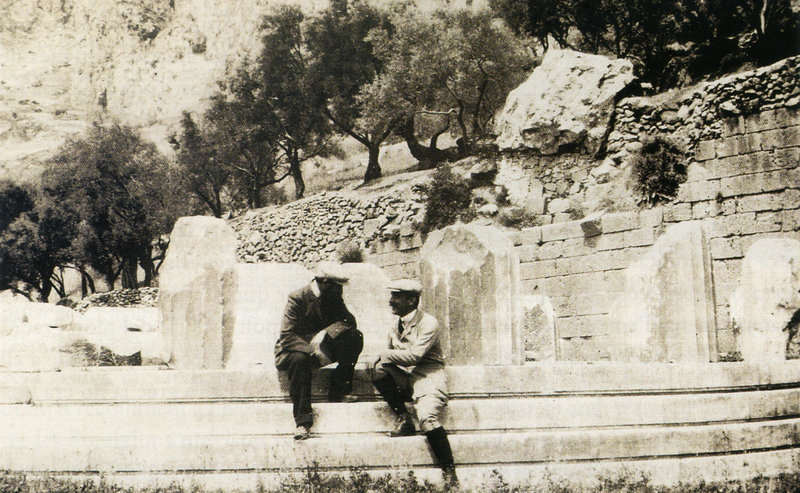Maillol's search for nothing
An exhibition in the Museu Marès focuses on the work of sculptor Aristides Maillol and his trip to see the antiquities of Greece in 1908
It is beautiful; it means nothing.” Nobel prizewinning author André Gide needed no grand words to praise Aristides Maillol's (Banyuls-sur-Mer, 1861-1944) The Mediterranean, in 1947. It was a work that inaugurated a new era in sculpture that would eventually lead to the abstraction of Henry Moore. The artist from French Catalonia finished the work in 1905, not long after abandoning painting in favour of sculpture. A century later, The Mediterranean adorns the patio of the Museu Marès in Barcelona, with a huge photo of its creator staring out at the sea that gives his singular piece its name as a backdrop.
The Mediterranean is the cornerstone of the exhibition, Maillol i Grècia, which brings together a small collection of the artist's works and dissects a crucial moment in the career of a sculptor who had such a strong influence on the noucentista movement: his trip to Greece in 1908: “It is in the Hellenic sculptural tradition that Maillol reaffirms himself. He discovered nothing new in Greece, but had everything confirmed,” says Àlex Susanna, the exhibition's curator. The Mediterranean, and the small sculpture Leda, also on display, were finished before the sculptor went to Greece, but show his interest in the sleek, compact forms of antiquity.
Maillol went to Greece looking for what Picasso sought in Africa and what Gauguin sought in Oceania: the purity of art. Yet, as Susanna says, Maillol already had what he was looking for in his head: “I do not go to Greece to learn anything, I go to see statues before the sea” he wrote in his diary at the time, a document that has been an invaluable source of inspiration for the exhibition.
Accompanied by the German patron of the arts, Harry Kessler, and the Austrian writer, Hugo von Hofmannsthal, Maillol spent five weeks in Greece, avidly visiting everything but interpreting what he saw in his own unique way. The world famous Charioteer of Delphi, for example, disappointed him and in his diary he declared the ancient statue to be “dead”.
Most of the 23 pieces on display in the Museu Marès exhibition, which runs until January 31, have been lent by the Musée Maillol in Paris, which is currently being renovated.




